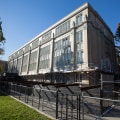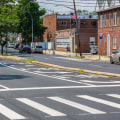The City Board, chaired by the president of the county under the New York City Statutes, is composed of members of the City Council and the president of each community board in the municipality. It focuses on issues related to land use, development, public policy, budget and other important matters with potential implications across the county. The Board hears submissions from city officials and others and, as part of the land use review process, is sometimes asked to vote on land use issues that affect more than one Community Board district. Converting abandoned railway corridors into parks can bring a series of extraordinary benefits to the communities in which they exist.
It will also improve road safety for pedestrians and cyclists, and it will dramatically reduce air pollution in communities that are systematically overburdened by the effects of climate change. The Queens City Cabinet is chaired by the president of the county under the New York City statutes and is comprised of the district managers of each community board in the county and representatives of city agencies. The Community Board is an official municipal body whose primary mission is to advise elected officials and government agencies on issues that affect the good and well-being of the district. Queens's 14 community boards are comprised of up to 50 unpaid volunteer members who serve staggered two-year terms.
The public is encouraged to attend and observe Community Board procedures, but only Board members can discuss and vote on motions presented. New York City's official policy on joint street names begins with a request made directly to the Community Board. Board members are people who live, work, own a business, or have any other important interest in the Community District. The CB1 District Office has two main functions: processing complaints and requests for services from citizens and providing administrative support to the Community Board. The Boards also hold hearings and issue recommendations on municipal budget, provision of municipal services, and many other issues affecting their communities.
The Community Boards were created by City Charter, and their roles and responsibilities are defined in chapters 69 and 70. During her term as president, four communities included in CB9 underwent contextual zoning plans that will help ensure their viability in the future. We encourage the public to attend public hearings, committee meetings, briefings and special events of the Community Board to actively participate in issues before it at a grassroots level. Residents and visitors of Flushing, NY can benefit from a variety of services provided by their local Community Board. From land use review processes to joint street name requests, this board is dedicated to improving quality of life for all those living in or visiting Queens County.




